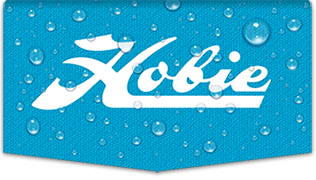One great thing about the Mirage Drive is that you can start pedaling and off you go -- no technique required. But when cruising along, there are ways to minimize fatigue, extend range, and gain speed, no matter what model you have. Here are three areas where improvements can usually be found.
The operator:1. Make sure your forward leg extends fully, giving you the best bio-mechanical advantage and the least energy output. This doesn't mean to lock your knee, but bring it just short of that. The pedals should be adjusted so they don't hit the stops. If that means taking a shorter stroke, it won't slow you down one bit; you can go just as fast with short strokes as long.
2. Seating comfort is quite important to good cruising. If you find yourself squirming after an hour or less, you need a better seat pad for improved blood flow to the leg muscles. The Hobie i-comfort pad (inflated about 1/2 way) works great for most, but there are other after-market seat pads available as well. Balls of the feet hot or sore? Current Drives come with cushion pads on the pedals, but you can retrofit these as well on any older pedals for a modest price.
3. Practice. Muscle stamina is more important than strength in cruising, and the muscles become more efficient in a relatively short period of time.
4. As you depress one leg going forward, try unweighting the other leg coming back. This gives you less weight to push. This takes a little practice. I use heel straps to keep the feet from dropping on the back pull, but you can also wedge them in the toe straps to accomplish the same thing.
Mirage Drive:Unnecessary friction can soak up a lot of energy over time. Reducing the Drive friction by just one ft.lb., for instance, can save 1 to 1.5 tons of energy per hour per leg at cruising speeds. That's a lot of wasted thrust or fatigue!
1. Keep your Drive lubed
2. Keep the chains and cables properly tensioned (not overly tight or loose)
3. Adjust your ST and Turbofins to direct the maximum thrust aft rather to the side.
A well tuned and lubed Drive makes a huge difference. Specific tips are found on the FAQ section.
Boat:Compared with seating position and optimizing the Drive, hull improvements are minor, but not negligible.
1. Your boat should be properly balanced. Distribute any load to keep the bow at least touching the water
at cruising speed. This maximizes the waterline length and minimizes drag.
2. A clean bottom moves better in the water than a dirty hull.
3. If you have any unused orifices on the bottom, tape them over. Examples include an unused Drivewell on a tandem, empty daggerboard well on the Adventure, etc. This adds a bit of streamlining to the hull for a better glide.
Very few have all these factors working in their favor, but you can often gain 10% just by getting the most from what you have. Little things add up over time. Whether you're going to your fishing grounds, on an excursion or towing your buddies back against bad weather, at the end of your "cruise" you can go further, get there sooner and feel more refreshed!







